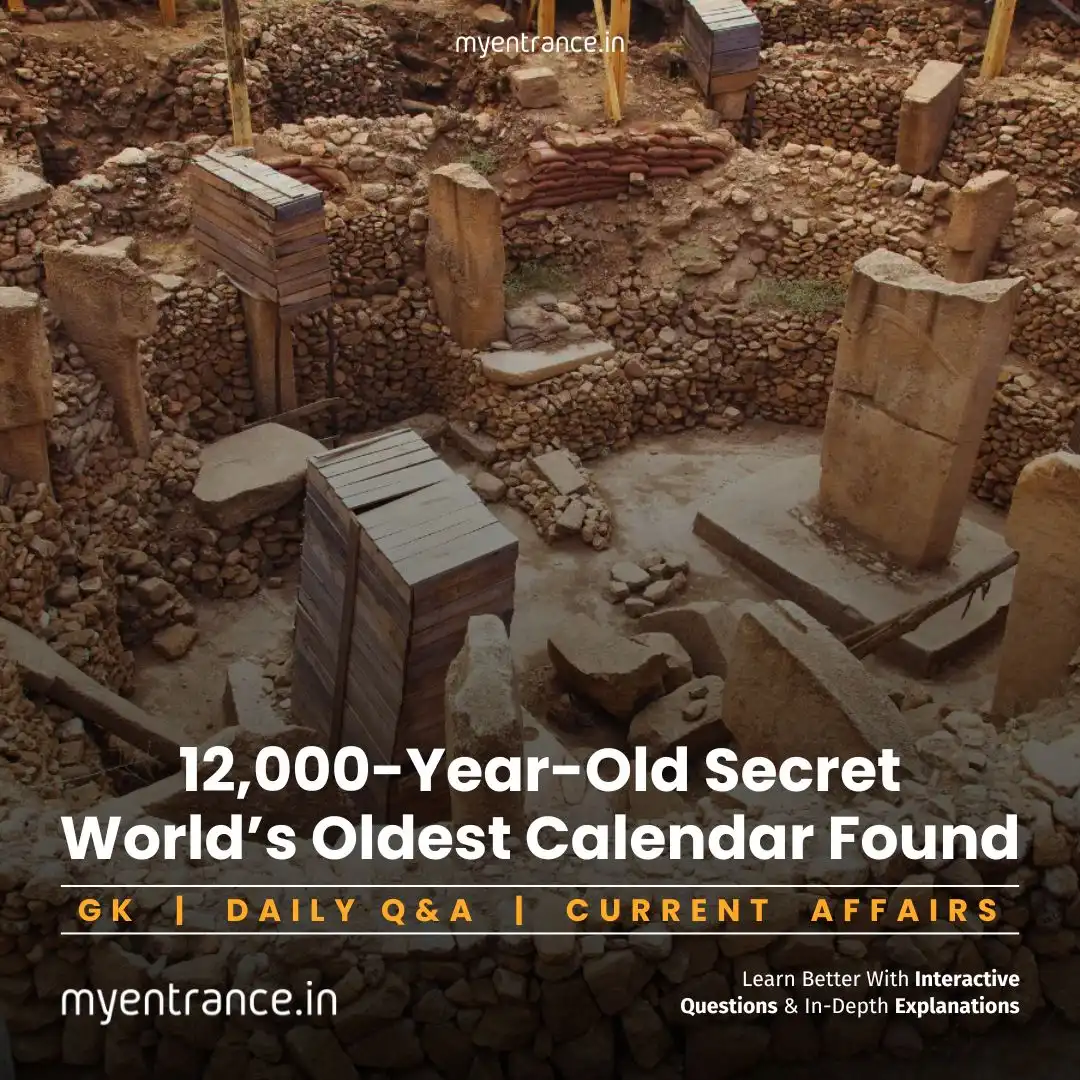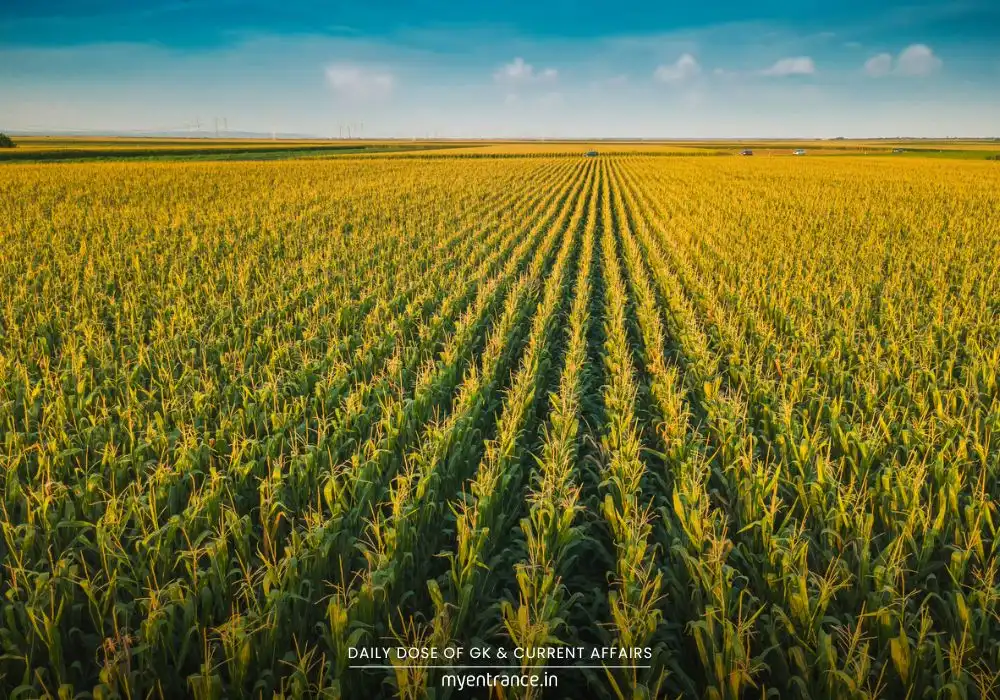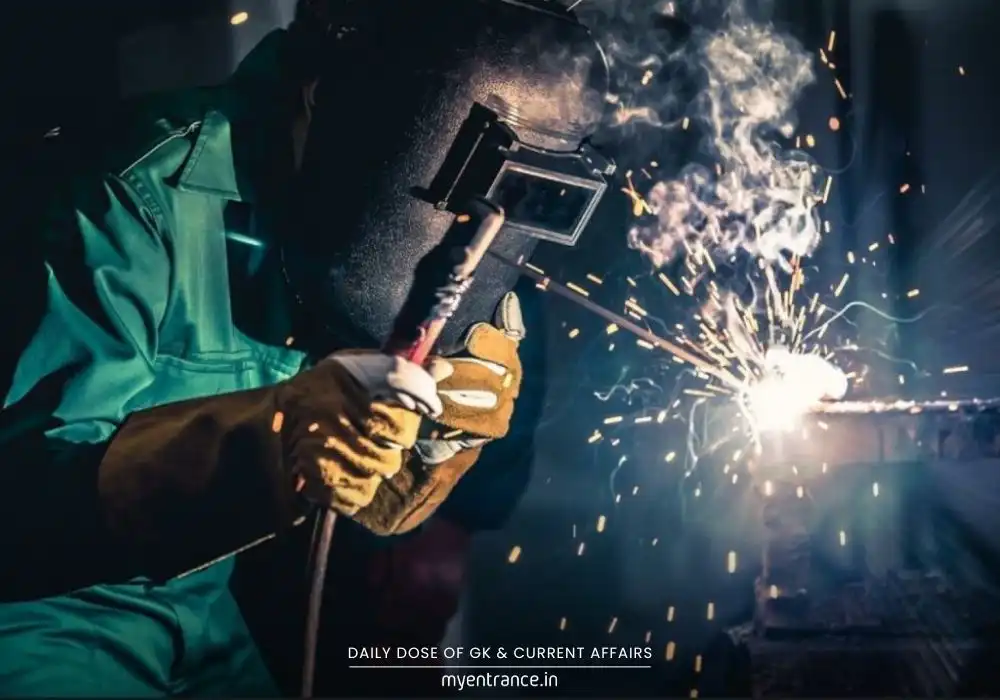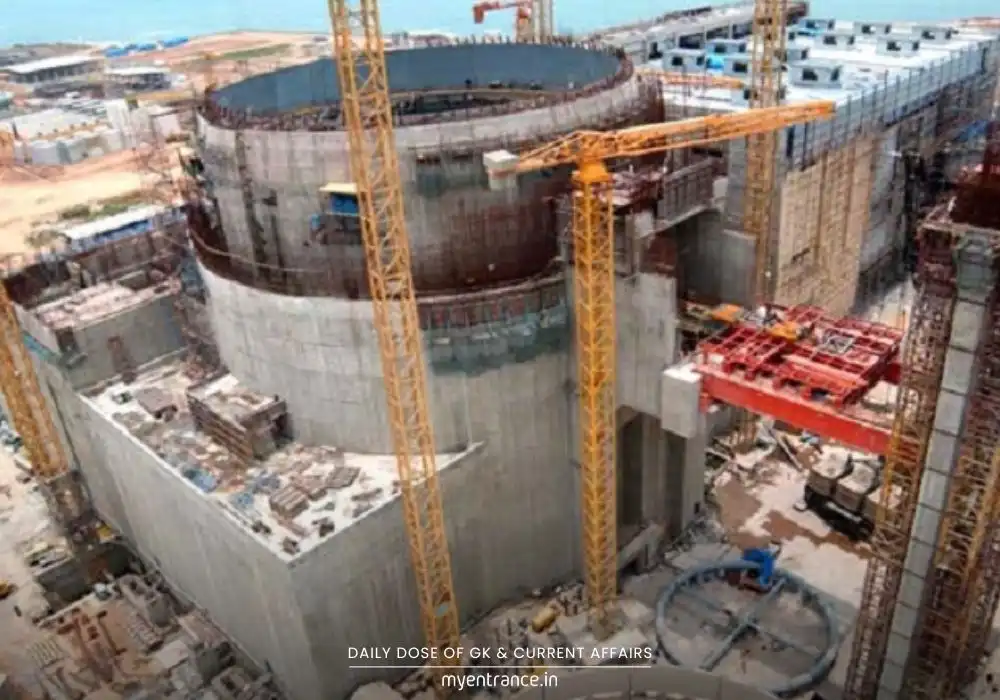Select Language
12,000-Year-Old Secret: World’s Oldest Calendar Found
Struggling with GK and current affairs for competitive exams? A groundbreaking discovery in Turkey reveals a 12,000-year-old calendar, offering fascinating insights into early human civilization. At MyEntrance, we simplify such complex topics for easy, online preparation—helping you ace your exams effortlessly!

The Ancient Wonder of Göbekli Tepe
Near Şanlıurfa in Turkey, Göbekli Tepe has stunned archaeologists with its massive stone pillars and intricate carvings. Recent research suggests it housed the oldest solar calendar ever found, dating back 12,000 years. What makes this site extraordinary?
Advanced Astronomy: Carvings on the pillars track solar and lunar cycles, proving ancient humans understood celestial movements.
Comet Connection: Symbols may depict a cataclysmic comet strike around 10,850 BC, which triggered an ice age and influenced early agriculture.
Prehistoric “Writing”? The carvings could be humanity’s first steps toward symbolic language, predating Greek astronomy by millennia.
This discovery challenges our understanding of early science, religion, and society—topics often tested in entrance exams under history and GK sections.
Why Is This Important for Exams?
Competitive exams like SSC, PSC, NID, and NIFT frequently include questions on:
Ancient civilizations and inventions (e.g., earliest calendars).
Astronomy milestones (e.g., solstices, comets).
Historical climate events (e.g., mini ice ages).
Göbekli Tepe’s findings are hot GK material—likely appearing in current affairs sections.
Sample Questions & Answers for Exam Prep:
Q: Where was the world’s oldest man-made calendar discovered?
A: Göbekli Tepe, Turkey.
Q: What major event is linked to Göbekli Tepe’s carvings?
A: A comet impact around 10,850 BC.
Q: How did ancient humans use Göbekli Tepe’s pillars?
A: To track solar/lunar cycles and meteor showers.
Q: Which astronomer’s work does Göbekli Tepe predate?
A: Hipparchus (150 BC).
Q: Why is Göbekli Tepe significant for the Neolithic Revolution?
A: It shows early societal/religious structures before farming.
Most Predicted Questions
Comprehensive study materials, Expert-guided tips & tricks, Mock tests and instant results.
Start your SSC, NIFT, NID, FDDI, PSC journey today with MyEntrance, your ultimate online coaching platform.















